Arches National Park
05/22/2024. In Utah, in and around Arches National Park, stone arches span hundreds of feet and stand for at most ten thousand years. A typical named arch might be 200 feet long and 5,000 years old. On the Sun today, I watched an arch at least 20,000 miles long take form, age, and collapse in the space of twenty minutes.
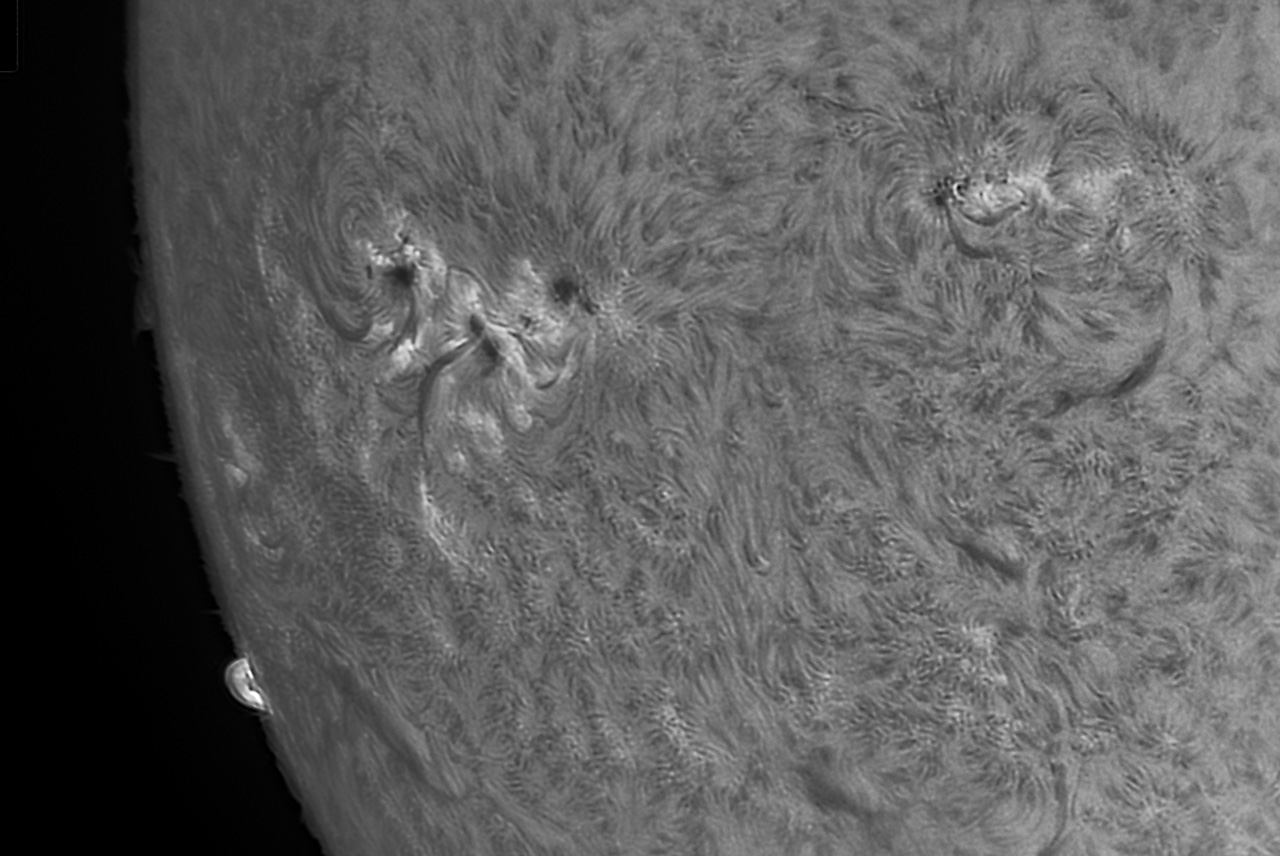
Taking my own advice, I tried boosting gain to keep exposures short. I also experimented with a smaller ROI (Region of Interest) to keep frame rates high. Gain 300 produced decent results. Gain 350 produced very flat images with hard-to-uise highlights. In each case, I exposed so all levels were in the left half of the histogram. So the strategy works, but it can be carried too far. 1.5ms is great, if you can get it without flattening the response curve. 2.5ms is much better than 7-8ms, and 4ms is still an improvement over slower exposures with less gain -- today.
Drizzling 150% recovered some space to cook with the ROI images, and today I just went ahead and drizzled everything for comparison's sake. It may even be worthwhile on full-frame captures (though it does stress my i7 noticeably to deal with the extra pixels).
Seeing was good but not great; slow with fairly large amplitude. There were also periods of stable air. I just shot through it all. Everything was best 100 of 1,000 frames except as noted:
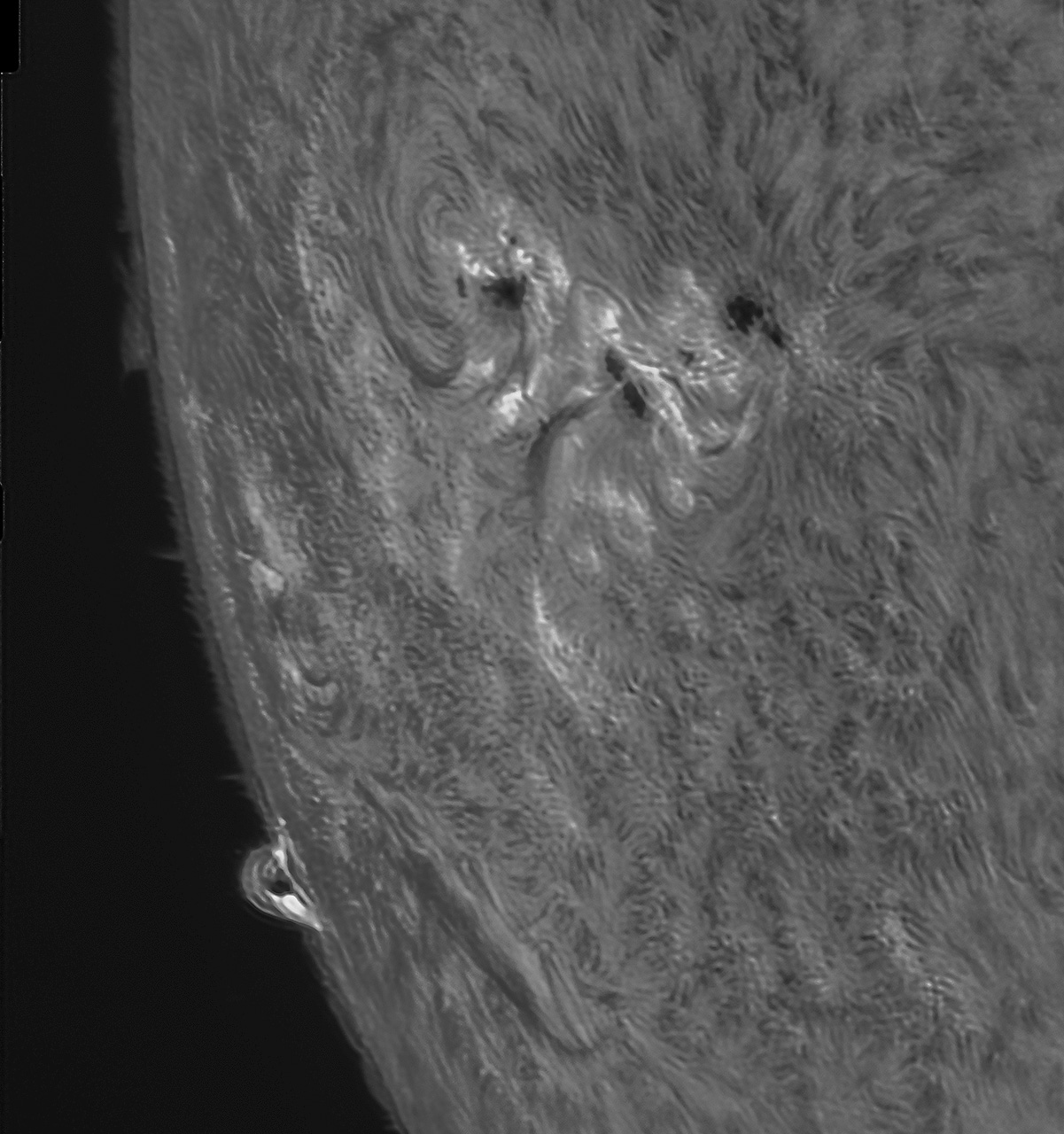
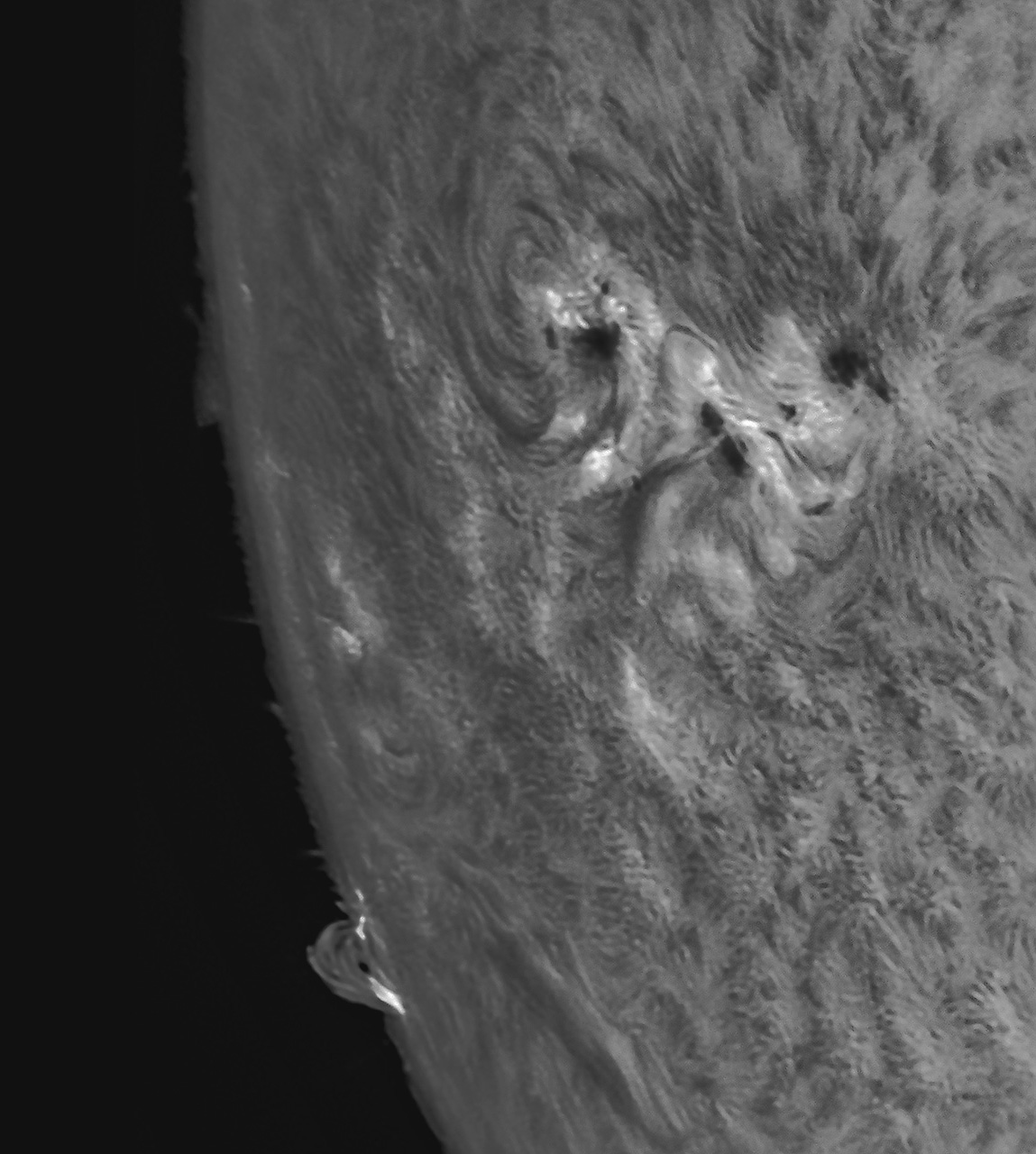
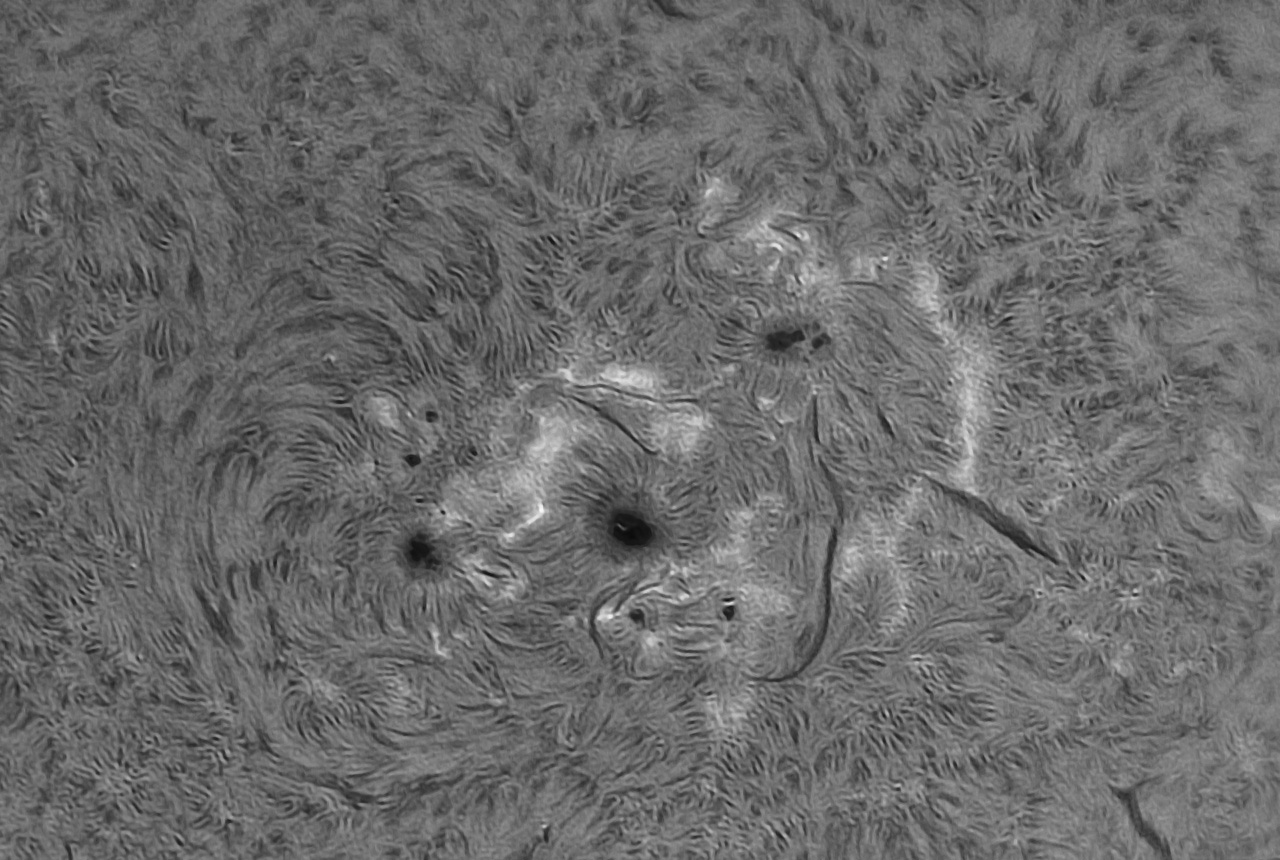
Best 20 of 1,000 frames.
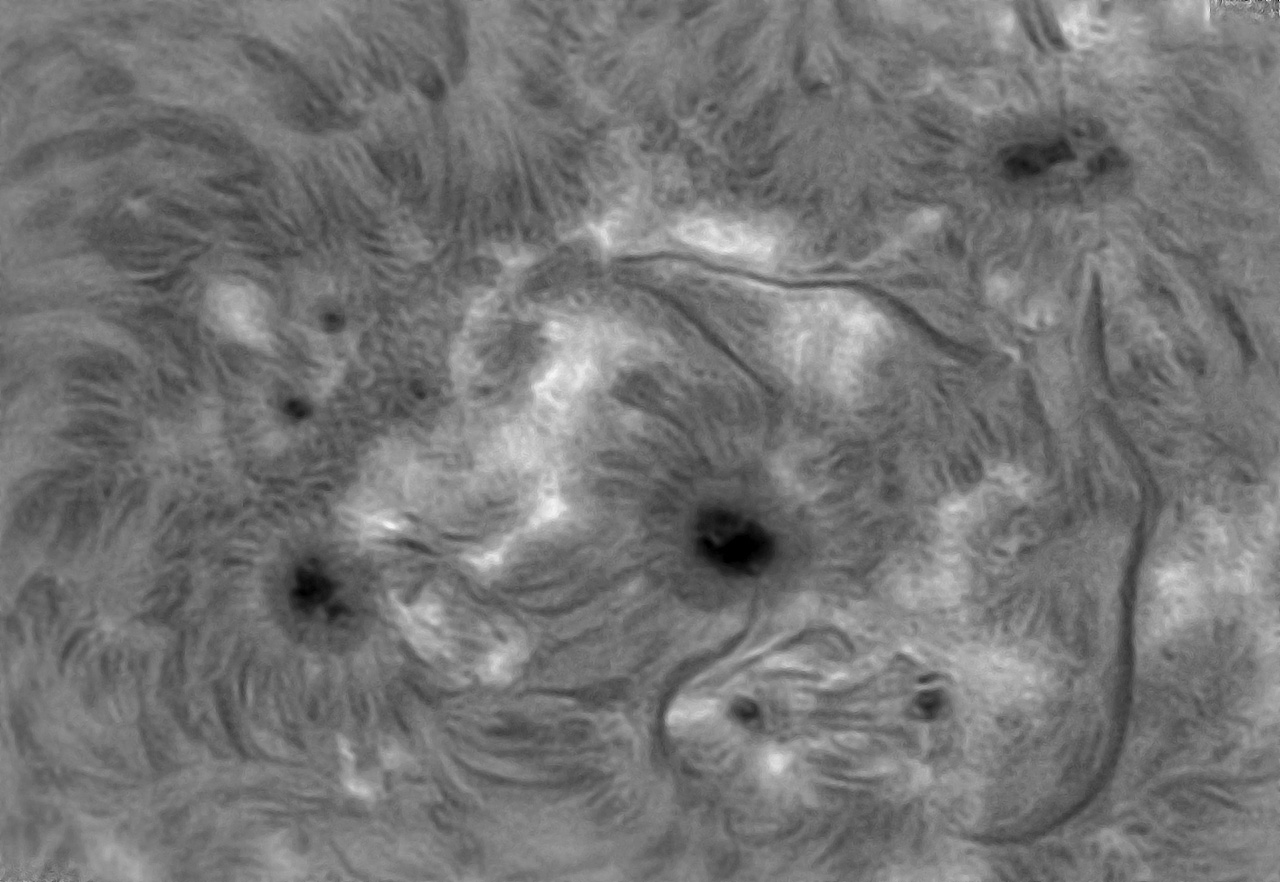
100 of 3,000 frames
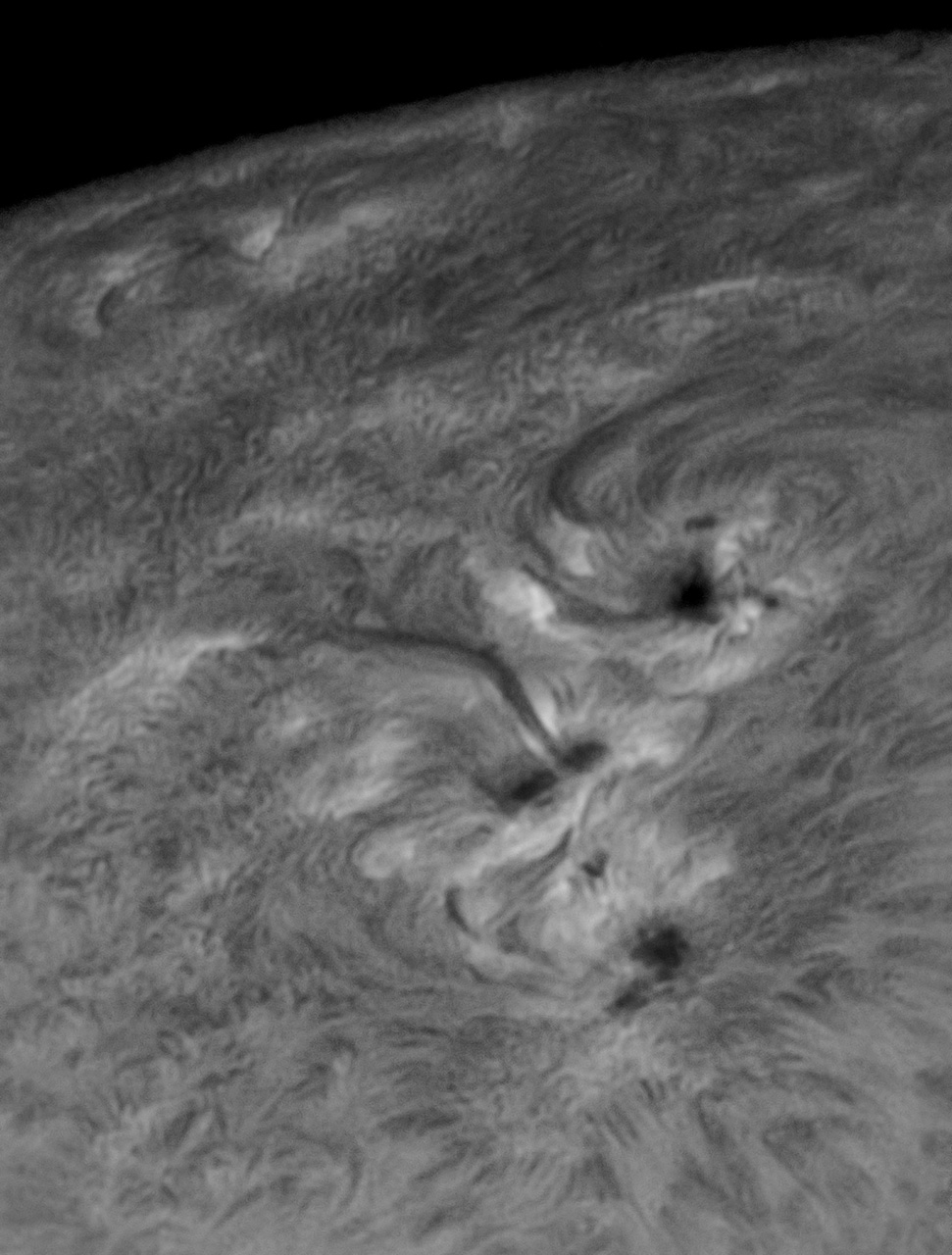
100 of 3,000 frames
05/23/2024. I am pretty sure that I have been systematically trying to use absolutely ridiculous pixel scales, that I am expending lots of resources in emphasizing the inherent blur in my video clips rather than the underlying detail.
The TMB92 has an F5.5 native focal ratio. With the 4.2x telecentric amplifier in the Quark, that yields a focal length of 2,100mm at F23. F23 is a little on the short side for the filter, but that's what we've got (I could stop the TMB down to 70mm, but it's not clear that I would gain more with the narrower F-ratio than I would give up owing to the reduced aperture). The ASI178MM has a pixel pitch of 2.8 microns. That works out to a pixel scale of 0.28 arc seconds per pixel. The resolution of a 92mm lens working at H-a wavelength is about 1.7 arc seconds. Some oversampling is desireable, but a factor of 6 is excessive. "The literature" (which amounts to comments by people on SolarChat.org who get excellent results) suggests that a factor of 3 - 3.5 is ideal.
So the good news is that I need just about half the pixel scale I've been using. There are two easy ways to make that adjustment: bin the sensor 2x2 or use a 0.5x telecompressor between the Quark and the camera. Some quick trials with reduced size clip data suggest that I give up little or nothing by binning. Data from a binned sensor would be easier and faster to work with; an optical correction would give me a wider field and faster exposures. Clear skies, please, and we'll give this a try.
05/24/2024. Quick looks between the clouds say that binning 2x2 is the way to go. Drizzle 1.5x in post to get some pixels back if you miss 'em. It's not clear that 2x2 binning gives up anything.
Telecompressing the Quark is always promising but as yet never rewarding. Moderate compression gave me conspicuous Newton's rings; more extreme compression suggested that a full-disk image was within reach, but it's mostly a mess. I managed a decent image of a full ring of prominences, but it's merely decent. The full disk shows all kinds of issues, some of which may be due to improper flatfielding. Try raising gamma to control burnout in mid-disk.
Don't bother clicking these. Maybe next time.
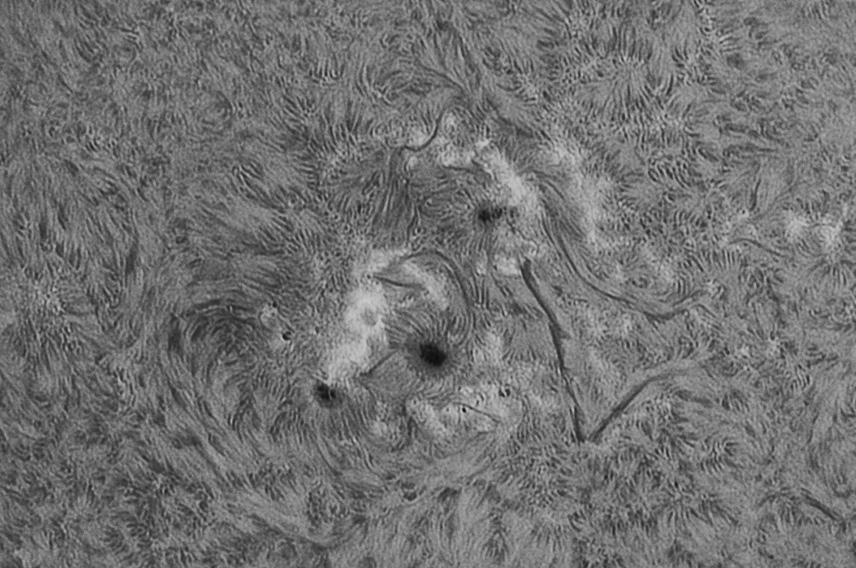
With 2x2 binning, not much, if anything, is lost.
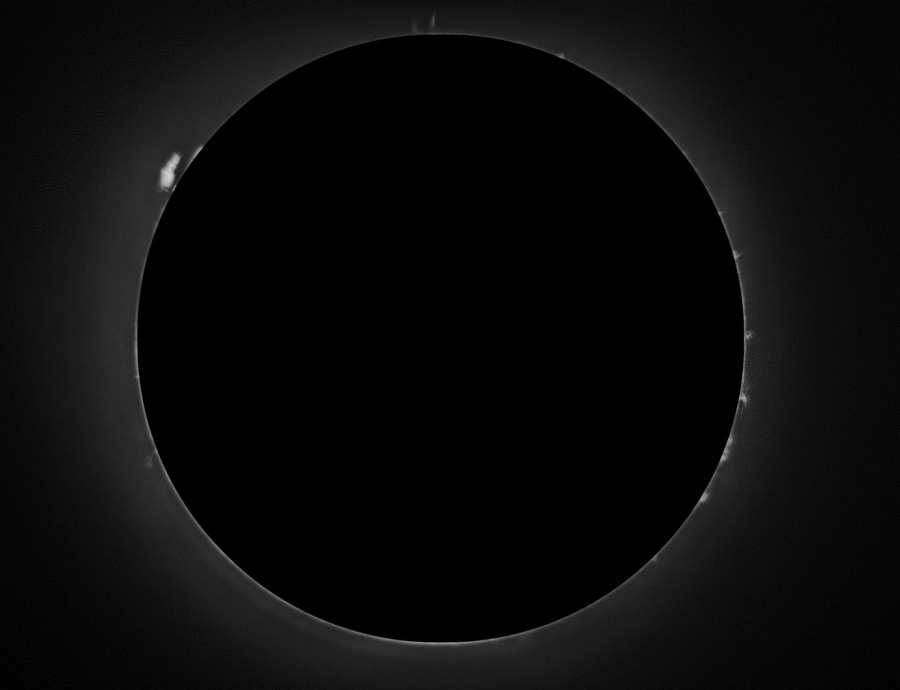
The telecompressed limb: this worked.
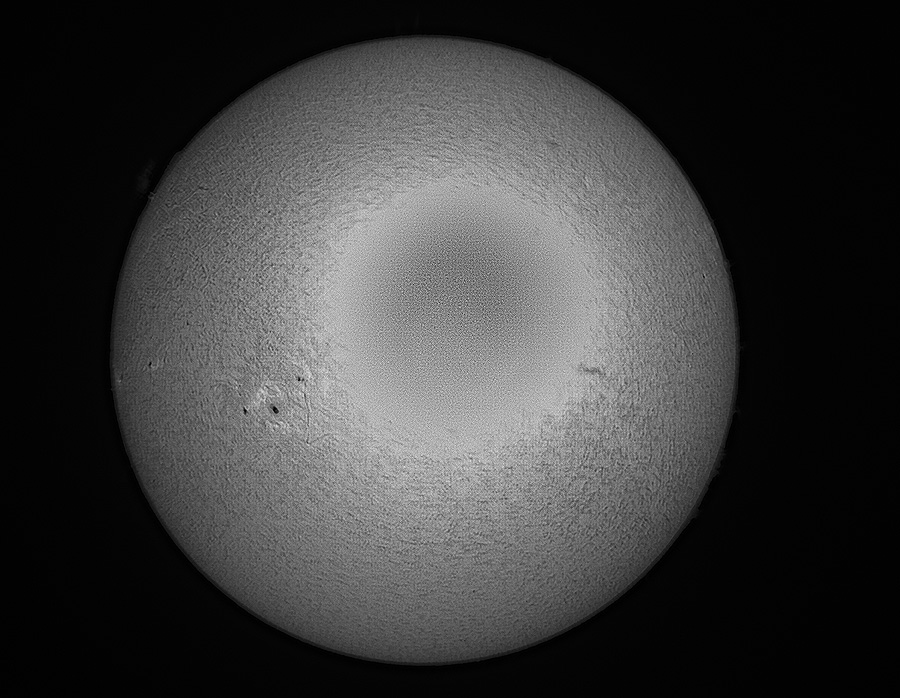
Full disk attempt: promising but not rewarding. So many issues!
Some clear day, just experiment until this is settled. Full-disk imaging will probably require a 4-panel mosaic. Keep in mind that Daystar sells a focal reducer for the Quark -- maybe there's a reason simple telecompressors don't suffice and leave room on the market for a dedicated optic.
2024/05/26. Well. That was instructive. I tried a simple telecompressor in different positions. At the end of the snout (about one quarter Sun), at the end of the snout plus 20mm (full sun but wierdly bad), and omitted (pretty good, actually; shooting in 2x2 binning and stacking with 1.5 drizzle produced some of the best results yet). I also tried what I thought was a telecompressor built into a 1.25-inch snout, but I believe now that that was a 2x or 3x barlow instead(!). With the provided spacing, it produced a more modest enlargement, but an enlargement just the same. I disassembled the item and prepared a 0.5x Antares telescompressor to replace the optics. Might be a day or two before I can try that out. Today's sky was hazy but still.
05/27/2024. I unglued the Barlow (!) from the 1.25-inch snout and replaced it with a 0.5x telecompressor. The image scale comes to a measured 0.31 arc seconds per pixel. I tried imaging at 1x1 and 2x2 back to back and strain to see any difference in the clarity of the results. What I do see, I might be imagining. At 2x2, the scale is 0.62 arc seconds per pixel, which in 2-3 arc second seeing, amounts to oversampling by a factor of 3 to 5. The 92mm aperture is diffraction limited at 1.7 arc seconds at the H-a wavelength, so the oversampling relative to that is 2.7, or a little under the ideal which is said to be about 3.5. Drizzling the image by 50% during reconstruction increases the oversampling ratio to 4 which is just a hair high. Anyway, this wored well -- best 200 of 1,000 frames, hi-gain, short-exposure:
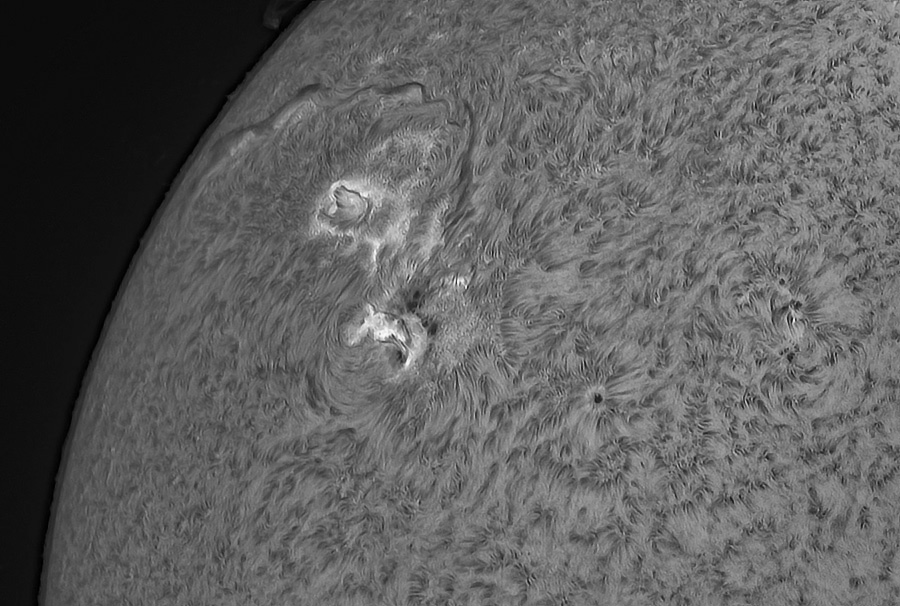
Workflow: (1) capture with FireCapture, binned 2x2, gamma off, enough gain to keep exposures fast in typical seeing; take 1,000 frames. (2) Stack with AS!4, using high hundreds of alignment points up to a thousand or so. I'm seeing better results with 20% keepers than with 5% or fewer; so stick with 10-20%. Drizzle 1.5. (3) Photoshop to crop frame edges. Use raw filter to bring up shadows and knock down highlights. Try a light denoise pass on highly restricted stacks, but forego if detail suffers. (4) You can try an aggressive SmartSharpen pass before leaving Photoshop, else go to ImPPG and adjust as needed. Bring R-C down from what may look best; reduce USM sigma and be careful with that slider, too. (5) Return to Photoshop for tone and sharpness tweaks.
Prefer your H-a color-mapped? Got that covered, too:
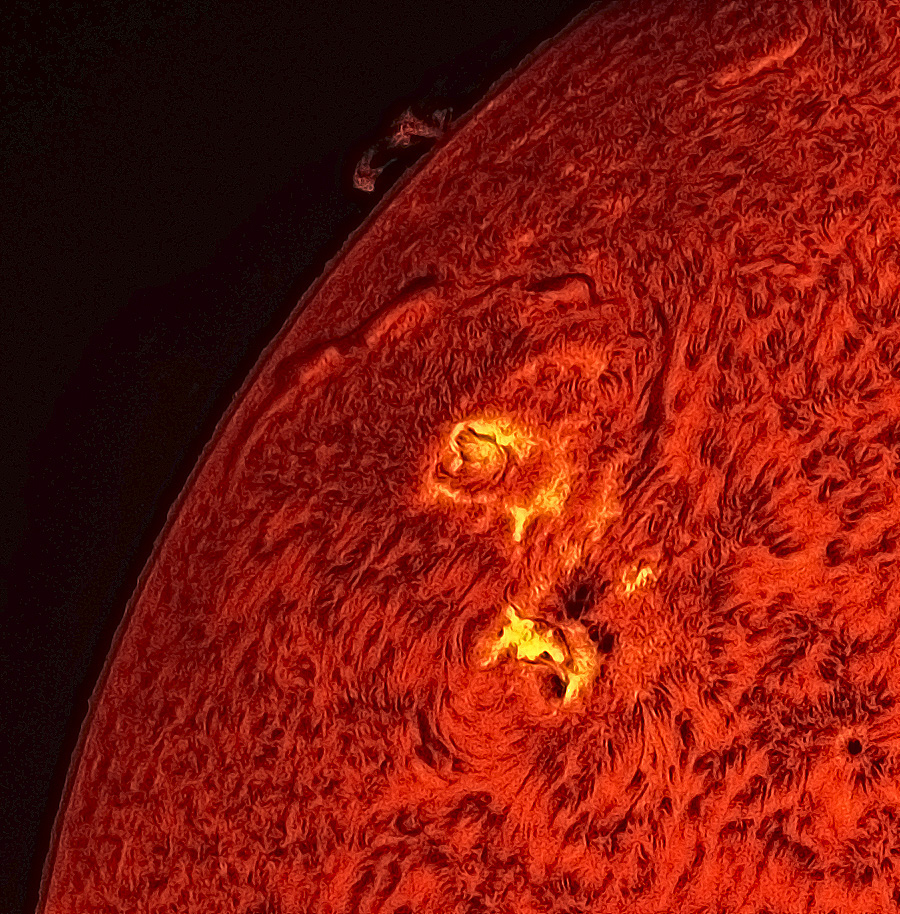
Yes, you can click this one.
You now have two snouts: one with an internal Antares 0.5x telecompressor for wide-field imaging or for days with crap seering, another with no internal optics for closer views and to allow snout-end telecompression for much wider views.
:: top ::